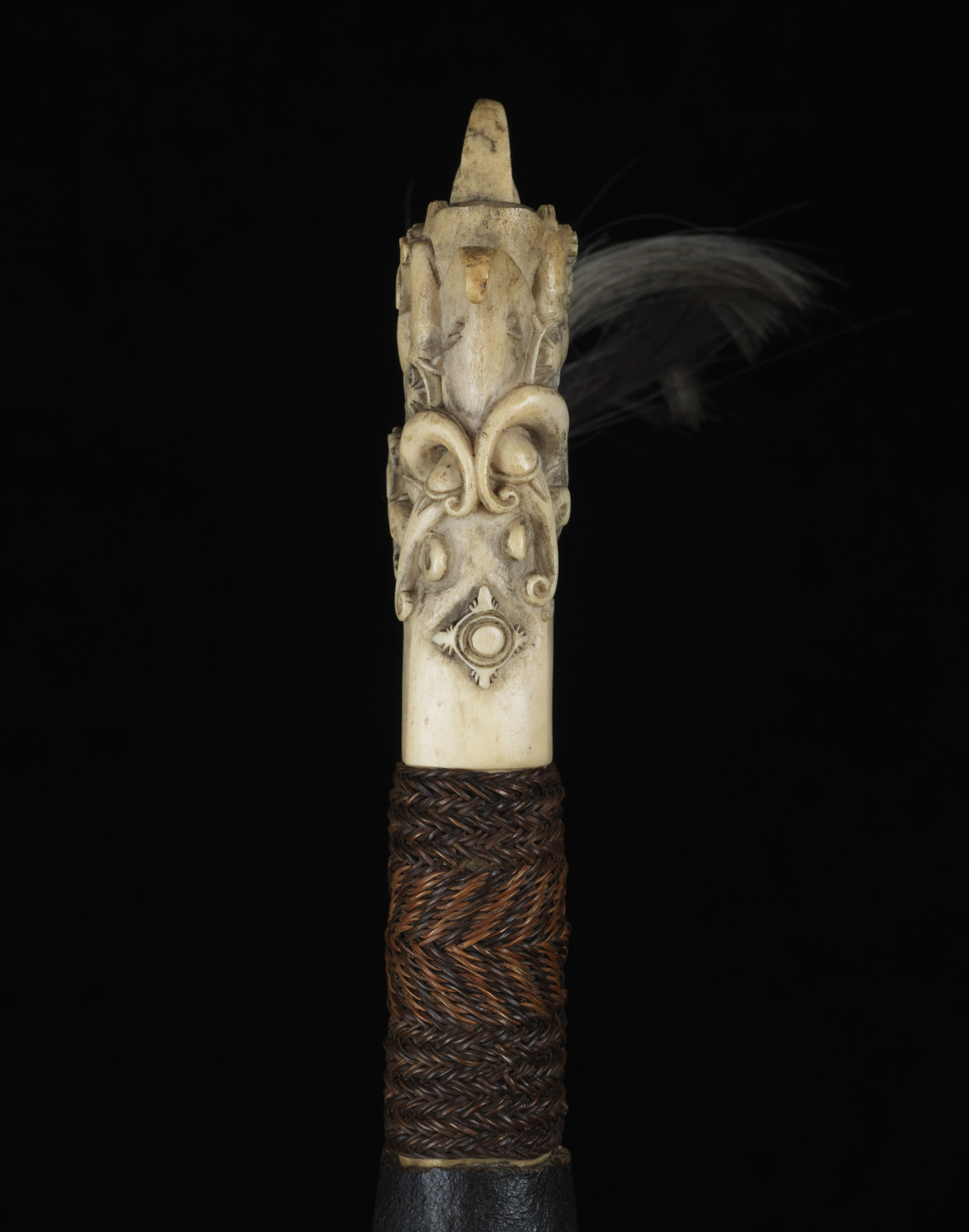Mandau
This parang ilang has a particularly elaborate handle made of deer antlers. Kohong kalunan or hudoq (face; mask) is a traditional term for the entire handle or design. The form is the variant with a high grip crown that is common throughout the Apokajan and Bahau region. The main motif is clearly recognizable as aso-heads, whose high curved upper jaws take on a spirally curled form. In some cases, forms that take up the hornbill motif can be seen, especially near the protruding part. The attached spiral has receded into the background as an ornamental theme and is only recognisable as the muzzle end of the aso dragons. The crown of the handle is strongly pronounced and has a thorn-like projection reminiscent of the tiger’s tooth, applied to the sheath as an emblem of the successful warrior. It remains to be seen whether this is related to the prospective warrior or initiator embodied in this area of the grip. The meaning of this combination of the aso, the underworld dragon, and the human crouching on it is explained by the myth of the soul’s journey. The warrior and headhunter has power over life and death and “rides” the aso, as it were, the moderator of initiation and soul journey and patron of the headhunt (kajau) (cf. A.E. Jansen, 1948). The carving can be described as exorbitant and shows no signs of damage. The handle is braided with fine rattan, dyed goat hair is inserted into the handle. The motif with the recognisable stylised human figure on the aso is called kohong kalunan in the Kenyah-Dayak, which means “human head”.
The blade is of high quality and has hollowed flanks separated on one side by a sharp burr. The hollow grinding on the back is the norm on mandau, but the concave finish on the front is very unusual and involves a great deal of effort, which far exceeds that of the forging. This makes the blade lighter and razor sharp without losing much of its strength. The hand position of the weapon is accordingly excellent. The steel shows signs of high-quality selective hardening along the cutting edge and appears to be industrially manufactured. In the Bahau area, steel of English manufacture was introduced on a large scale by the British and Chinese in the late 19th century, surpassing the quality of the locally melted steel.
| Object | Mandau „parang ilang“, „malat“ |
| Culture | Borneo/Kalimantan, Dayak, Bahau-region (Kajan) |
| Time | Late 19th century |
| Dimensions | Length 67 cm |
| Material | Steel, deer horn, rattan, animal hair |








